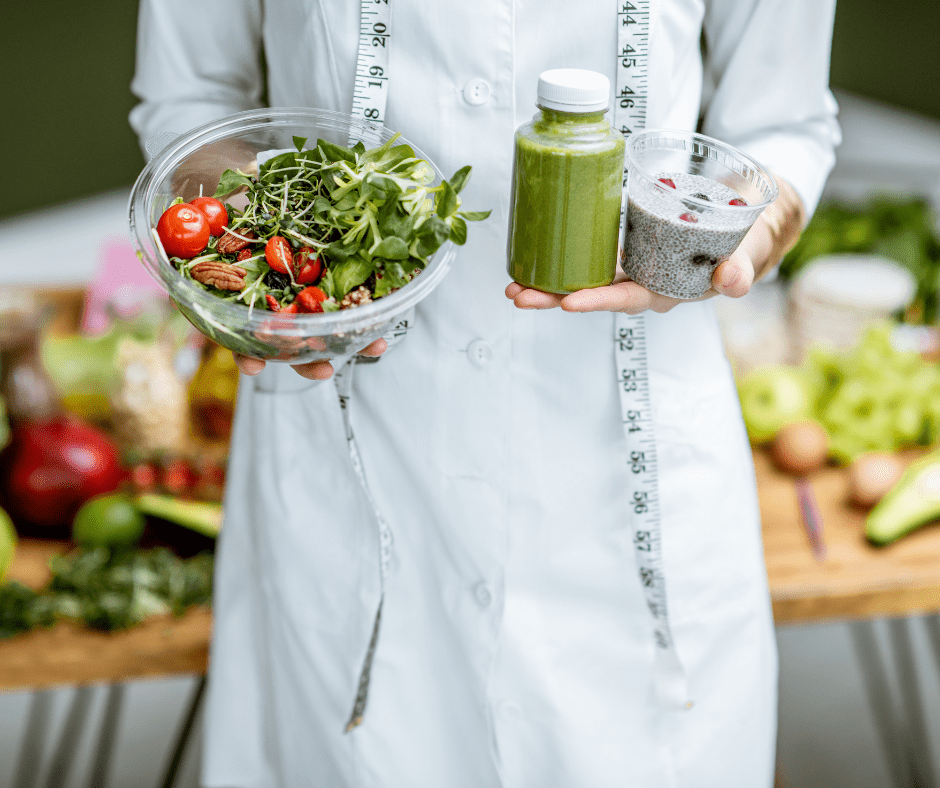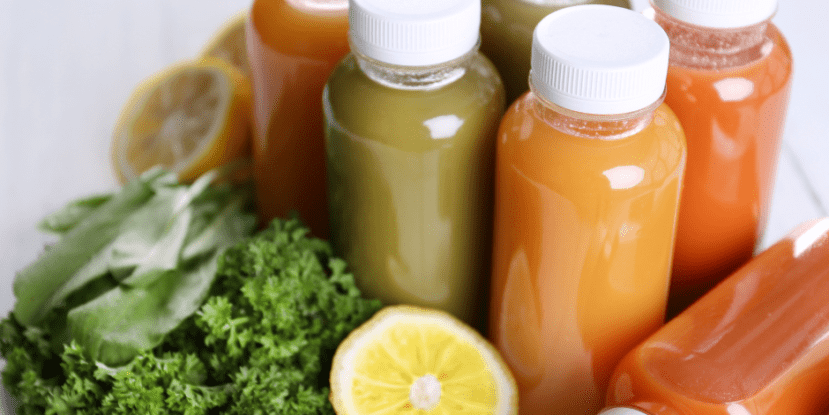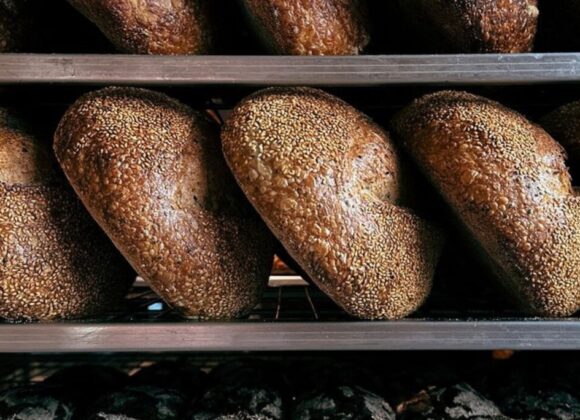Coraz bardziej świadomi zdrowia konsumenci wymagają lepszej jakości żywności. Konsumenci są zainteresowani: żywnością posiadającą cechy sensoryczne przypominające świeżość, żywnością pozbawioną chemicznych dodatków oraz żywnością bezpieczną. Coraz większą uwagę wśród konsumentów zdobywa żywność z „czystą etykietą”, która podkreśla, że żywność jest naturalna, świeża i wolna od chemicznych dodatków. Zwiększone zainteresowanie konsumentów żywnością wysokiej jakości doprowadziło do opracowania technologii nietermicznego przetwarzania żywności, stanowiących alternatywę dla konwencjonalnej obróbki cieplnej.
Procesy nietermicznego przetwarzania żywności pozwalają zachować właściwości organoleptyczne i wartości odżywcze żywności, co nie jest możliwe przy zastosowaniu tradycyjnej pasteryzacji termicznej. Przykładem metody nietermicznego utrwalania żywności jest metoda obróbki pod wysokim ciśnieniem hydrostatycznym – paskalizacja (HPP – high pressure processing). Amerykańska Agencja ds. Żywności i Leków oficjalnie zatwierdziła HPP jako technologię pasteryzacji nietermicznej, która może zastąpić tradycyjną pasteryzację w przemyśle spożywczym. Na rynku można znaleźć paskalizowane soki, owoce, warzywa, mięso, owoce morza, dania gotowe oraz sosy.

fot. Pinterest
Zasada działania metody HPP
Produkty spożywcze, które zostały hermetycznie zamknięte, umieszczane są w izolowanym termicznie, hermetycznym naczyniu i poddawane działaniu bardzo wysokiego ciśnienia (100–600 MPa) przekazywanego przez płynny ośrodek (zwykle wodę), co zapewnia efekt pasteryzacji poprzez równomierne i natychmiastowe zastosowanie wysokiego ciśnienia. Zgodnie z zasadą ogrzewania sprężarkowego wzrost ciśnienia o 100 MPa powoduje wzrost temperatury wody o około 3°C. Początkowa temperatura pasteryzacji jest kontrolowana w zakresie 5–10°C, co oznacza, że po zwiększeniu ciśnienia do 600 MPa temperatura wody nie przekroczy 30°C. Tym samym HPP zmniejsza wpływ temperatury na składniki żywności.
Dwie podstawowe zasady, a mianowicie zasada izostatyczna i zasada Pascala, regulują równomierne przyłożenie ciśnienia do produktów spożywczych w zamkniętym naczyniu. Zgodnie z zasadą izostatyczną, gdy ciśnienie jest przykładane do ciekłego ośrodka w zamkniętym środowisku, równe ciśnienie wywierane jest na obiekty w dowolnym punkcie otoczenia, niezależnie od kształtu i wielkości obiektu. Zasada Pascala stwierdza, że zmiana ciśnienia spowodowana przyłożeniem siły zewnętrznej do płynu znajdującego się w spoczynku w zamkniętym pojemniku jest przenoszona równomiernie i bez strat na każdą porcję płynu oraz na ścianki pojemnika. Dlatego kształt i wielkość opakowań żywności nie mają wpływu na efekty pasteryzacji pod wysokim ciśnieniem. W tej samej partii mogą być przetwarzane produkty spożywcze o różnej objętości.
Zalety i wady metody HPP
HPP przewyższa tradycyjne technologie obróbki cieplnej pod następującymi względami. Można ją wykonywać w temperaturze otoczenia, co eliminuje zużycie energii potrzebnej do ogrzewania i późniejszego chłodzenia. Produkty spożywcze podczas HPP znajdują się w opakowaniu końcowym i nie mają bezpośredniego kontaktu z urządzeniami przetwarzającymi, co zapobiega powstawaniu wtórnych zanieczyszczeń po pasteryzacji oraz umożliwia odzysk i ponowne wykorzystanie czynnika przenoszącego ciśnienie. Ponieważ HPP ma zalety w postaci niskiego zużycia energii i niskiego poziomu zanieczyszczeń, jest to technologia przetwarzania stosunkowo przyjazna dla środowiska. Ponadto technologia ta zapewnia bezpieczeństwo mikrobiologiczne żywności bez dodatku konserwantów i pozwala przetworzonej żywności zachować naturalne aromaty i wartości odżywcze oryginalnego surowca spożywczego. Dlatego technologia HPP jest uznawana za technologię minimalnego przetwarzania, która zapewnia zarówno bezpieczeństwo żywności, jak i smak oraz właściwości prozdrowotne.
Metoda HPP umożliwia zachowanie składników funkcjonalnych oraz ogranicza inaktywację przeciwutleniaczy (karotenoidów, polifenoli, witaminy C, antocyjanów). Jednakże ze względu na wysokie koszty inwestycji w sprzęt HPP, koszty produkcji produktów HPP są nieco wyższe niż w przypadku produktów innych niż HPP, co skutkuje wyższą średnią ceną jednostkową produktów HPP. Dlatego wykorzystanie HPP do utrwalania w przemyśle spożywczym jest znacznie mniejsze niż w przypadku tradycyjnej pasteryzacji termicznej. Ze względu na różnice w kosztach produkcji należy przyjąć odmienne strategie pozycjonowania na rynku produktów HPP i produktów pasteryzowanych termicznie.
Paskalizacja w rozwoju rynku żywności prozdrowotnej
Przemysł spożywczy to sektor ściśle powiązany ze zdrowiem konsumentów. Konsumenci są skłonni kupić produkt tylko wtedy, gdy produkt jest w pełni bezpieczny. Konsumenci oczekują, że żywność będzie minimalnie przetworzona, bogata w składniki odżywcze i składniki funkcjonalne, pozytywnie wpływające na zdrowie. Technologia pasteryzacji termicznej jest podstawową technologią w przemyśle spożywczym, ale może mieć negatywny wpływ na: wygląd, smak i wartość odżywczą żywności i nie zaspokaja zapotrzebowania współczesnego społeczeństwa na naturalną, świeżą i estetycznie wyglądającą żywność. Technologia HPP oferuje możliwości opracowywania nowych produktów spożywczych o przedłużonym terminie przydatności do spożycia, zachowując właściwości organoleptyczne i wartości odżywcze.

fot. Pixabay
Wysokie ciśnienie wzmacnia prozdrowotne składniki żywności, jest ono w stanie zaspokoić potrzeby większości konsumentów, dlatego też rozwój produktów spożywczych o walorach zdrowotnych będzie stanowić trend rozwoju produktów HPP. Zdolność HPP do utrzymania bezpieczeństwa mikrobiologicznego przy jednoczesnym zwiększaniu wartości odżywczej produktów spożywczych przyczyni się do szerszego jej zastosowania w przemyśle spożywczym lub biotechnologicznym.
Literatura:
- Bolumar, Tomas, et al. “High‐pressure processing of meat: Molecular impacts and industrial applications.” Comprehensive Reviews in Food Science and Food Safety 20.1 (2021): 332-368.
- Huang, Hsiao-Wen, Chiao-Ping Hsu, and Chung-Yi Wang. “Healthy expectations of high hydrostatic pressure treatment in food processing industry.” Journal of Food and Drug Analysis 28.1 (2020): 1-13.
- Galanakis, Charis M. “Functionality of food components and emerging technologies.” Foods 10.1 (2021): 128.
- Zhang, Xiaotian, Min Zhang, and Benu Adhikari. “Recent developments in frying technologies applied to fresh foods.” Trends in Food Science & Technology 98 (2020): 68-81.
- Munekata, Paulo ES, et al. “Effect of innovative food processing technologies on the physicochemical and nutritional properties and quality of non-dairy plant-based beverages.” Foods 9.3 (2020): 288.










 Młodszy specjalista ds. komunikacji marketingowej i PR.
Młodszy specjalista ds. komunikacji marketingowej i PR.


 Absolwent Uniwersytetu Warszawskiego oraz Szkoły Głównej Gospodarstwa Wiejskiego. W branży HoReCa od ponad 10 lat. Przez lata związany z Grupą Trip, Sobienie Królewskie Golf and Country Club oraz restauracją Florentin w Warszawe.
Absolwent Uniwersytetu Warszawskiego oraz Szkoły Głównej Gospodarstwa Wiejskiego. W branży HoReCa od ponad 10 lat. Przez lata związany z Grupą Trip, Sobienie Królewskie Golf and Country Club oraz restauracją Florentin w Warszawe. Absolwentka Wydziału Architektury Politechniki Warszawskiej na kierunku Architecture for Society of Knowledge oraz Komunikacji Wizualnej na Politecnico di Milano. Specjalistka od budowania nastroju. Doświadczenie zdobywała w kraju i zagranicą podczas licznych warsztatów międzynarodowych (Sevilla, Lizbona, Florencja), stypendium na La Sapienza (Rzym) oraz pracując m.in. w Carmi e Ubertis i ADM Milano.
Absolwentka Wydziału Architektury Politechniki Warszawskiej na kierunku Architecture for Society of Knowledge oraz Komunikacji Wizualnej na Politecnico di Milano. Specjalistka od budowania nastroju. Doświadczenie zdobywała w kraju i zagranicą podczas licznych warsztatów międzynarodowych (Sevilla, Lizbona, Florencja), stypendium na La Sapienza (Rzym) oraz pracując m.in. w Carmi e Ubertis i ADM Milano.








 Menedżer z wieloletnim doświadczeniem w branżach kosmetycznej, spożywczej, dziecięcej. W trakcie swojej kariery związany z firmami takimi jak: L’Oreal, Samsung, Danone-Nutricia, Unilever. W ciągu swojego życia zawodowego odpowiadał między innymi za rozwój sprzedaży i contentu eCommerce w Polsce i krajach Europy Środkowo-Wschodniej.
Menedżer z wieloletnim doświadczeniem w branżach kosmetycznej, spożywczej, dziecięcej. W trakcie swojej kariery związany z firmami takimi jak: L’Oreal, Samsung, Danone-Nutricia, Unilever. W ciągu swojego życia zawodowego odpowiadał między innymi za rozwój sprzedaży i contentu eCommerce w Polsce i krajach Europy Środkowo-Wschodniej. 

























































